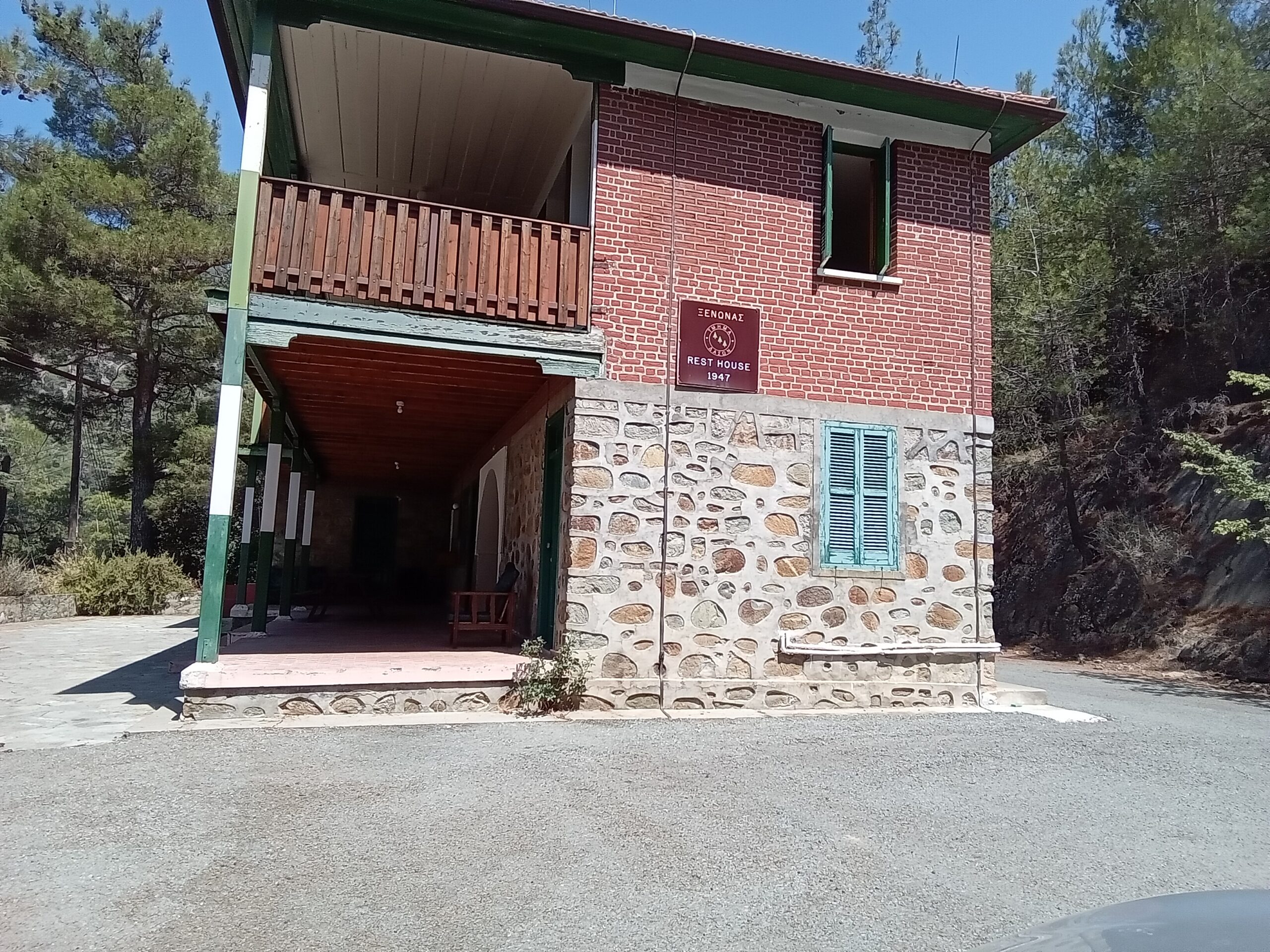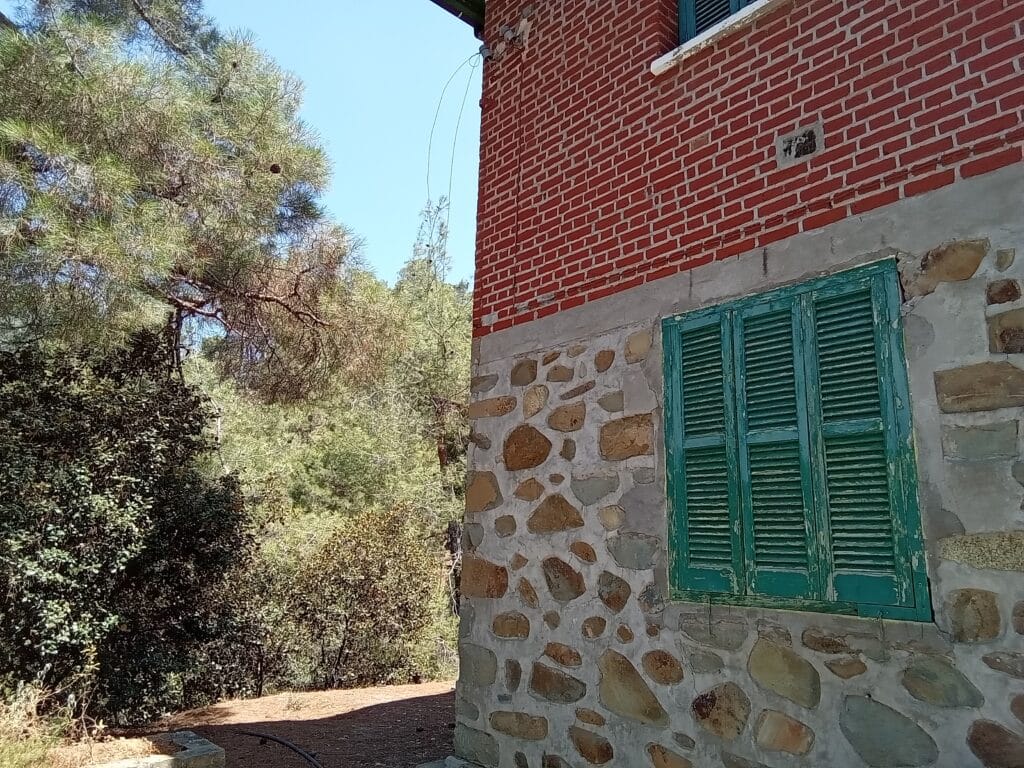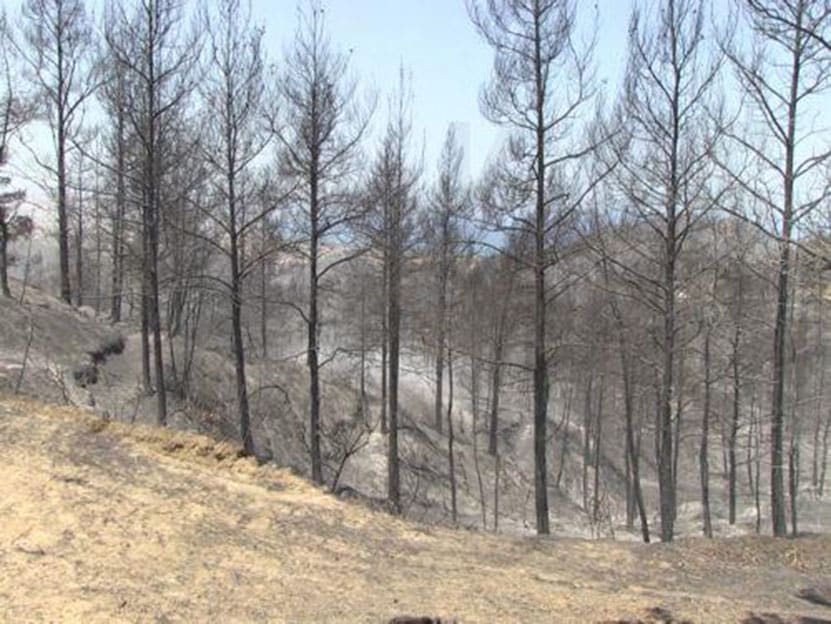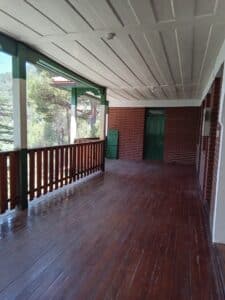The ‘Rest House’ at the forestry station at Stavros tis Psokas could used some TLC, and some electricity
Deep in the heart of the Paphos Forest is the time-forgotten Stavros tis Psokas forestry station, nestled between soaring mountains and stalwart pines.
“The Paphos Forest is like a church for the forestry department, and the Stavros tis Psokas station is the altar of the church,” Director of the Forestry Department Charalambos Alexandrou told the Sunday Mail.
“The station is surrounded by centuries old, pristine pine trees,” he told us, reiterating that the station serves as the headquarters for the Paphos branch.
You’ve likely seen the road signs beckoning a zig-zagging journey up through the mountains, with one route taking you through the picturesque spa village of Kalopanayiotis.
But not many make the trip, despite the near certainty of seeing moufflon at the nearby enclosure. We were treated to a lengthy display of a flock – is there a collective noun for moufflon? – Cyprus’ national animal.
Those who do brave the mountain passes are rewarded with a red brick ‘Rest House’ built in 1947, with other rooms available to rent in wooden cabins nearby.
At least, that’s what we were expecting.

“Sorry, the rooms are not available – there’s no electricity, it’s been cut,” was the reply from an exhausted looking forestry department official at the station nearby, busy scribbling data into a book.
“The power was cut after the fire, and I’m not sure if I’m even allowed to let you stay there but I could call my boss if you’re insistent – you’d be in darkness, however,” he continued.
We had planned on camping anyway, at the small site just below the café-restaurant – but his comments capture the current situation faced by the key forestry station.
Power has been cut to the Stavros tis Psokas station and Alexandrou blames a potentially devastating fire in July on unsuitable and exposed overhead cables running through the Paphos Forest.
Asked to comment on the matter, the Electricity Authority of Cyprus (EAC) declined to comment and instead referred us to the agriculture ministry for comment – which the forestry department is part of.

So how was the café across the road serving chilled coffees? “Stavros tis Psokas is now powered by a generator and we’re now at the stage of carrying out an evaluations to install photovoltaics to have an off-grid system” Alexandrou told us.
However, that doesn’t cover the guest houses.
He explained that with renewable photovoltaic energy and the generator the needs of the station and its nearby buildings will be fully covered.
“I was there recently to review two potential locations for the photovoltaics… but the generator will likely be needed in the winter months and serves as a vital back up should any issues arise.
“It’s worth noting that the generator is from the time of the English, and we’ve been maintaining them since then,” he explained.
He went on to say that: “It’s one of the positives from the English and we maintained them, many of the benefits from the English we’ve kept and maintained.”
Alexandrou takes credit for the lights being on at the offices there, saying that he gave instructions in May to ensure that the generators are in working condition. Just a month later, the fire struck nearby.
The potentially devastating fire was swiftly dealt with, however, and we were able to enjoy a night’s camping at the nearby site.

Intrigued, however, we checked out the few other buildings in the otherwise untouched surroundings.
The three main buildings, made of stone and red bricks, harken back to a bygone era which is clearly marked out with the “1947” and “1948” labels on them, their year of construction.
A few other housing units appear forgotten entirely, being reclaimed by nature.
The only resident I found when peeking into one of the disused buildings was a bat, favoring a rotted rafter over the torn mattress below.
Alexandrou insists that the cabins and Rest House rooms are maintained and usually available for rent.
When asked, however, as to why the other buildings are not kept up to standard and rented out; he said that plans are underway.

“Ongoing and upcoming cooperation with the tourism ministry is going to help us a lot – that area has so much to offer: a huge network of trails and paths.
“Some say that the Troodos forest is better but the Paphos forest has its own separate importance and significance,” he told us.
Should those plans ever get out of the drawer and be put into action, many more will be able to enjoy what Cyprus has to offer: not just sand and sea, but peaks and pines.
But the latest flare-up near Stavros tis Psokas has highlighted the sensitivity of human activity in the area.
More human presence and activity runs the risk of accidents, either through faulty cables – now seemingly dealt with – or by a stray cigarette.
Indeed, some prefer the solace offered by the campsite’s seclusion.
“We just came from the Pyrgos camping site, we couldn’t stay there any longer – it was just chaos, there were hundreds of people there and just two toilets, it stank,” another camper told me.
The camping area at Stavros tis Psokas was only about 70 per cent full when we stayed just after the typically hectic period throughout holiday sites in Cyprus – the August 15 weekend.
“It’s our [him and his partner] first time coming here but it’s exactly what we were looking for,” he beamed.

